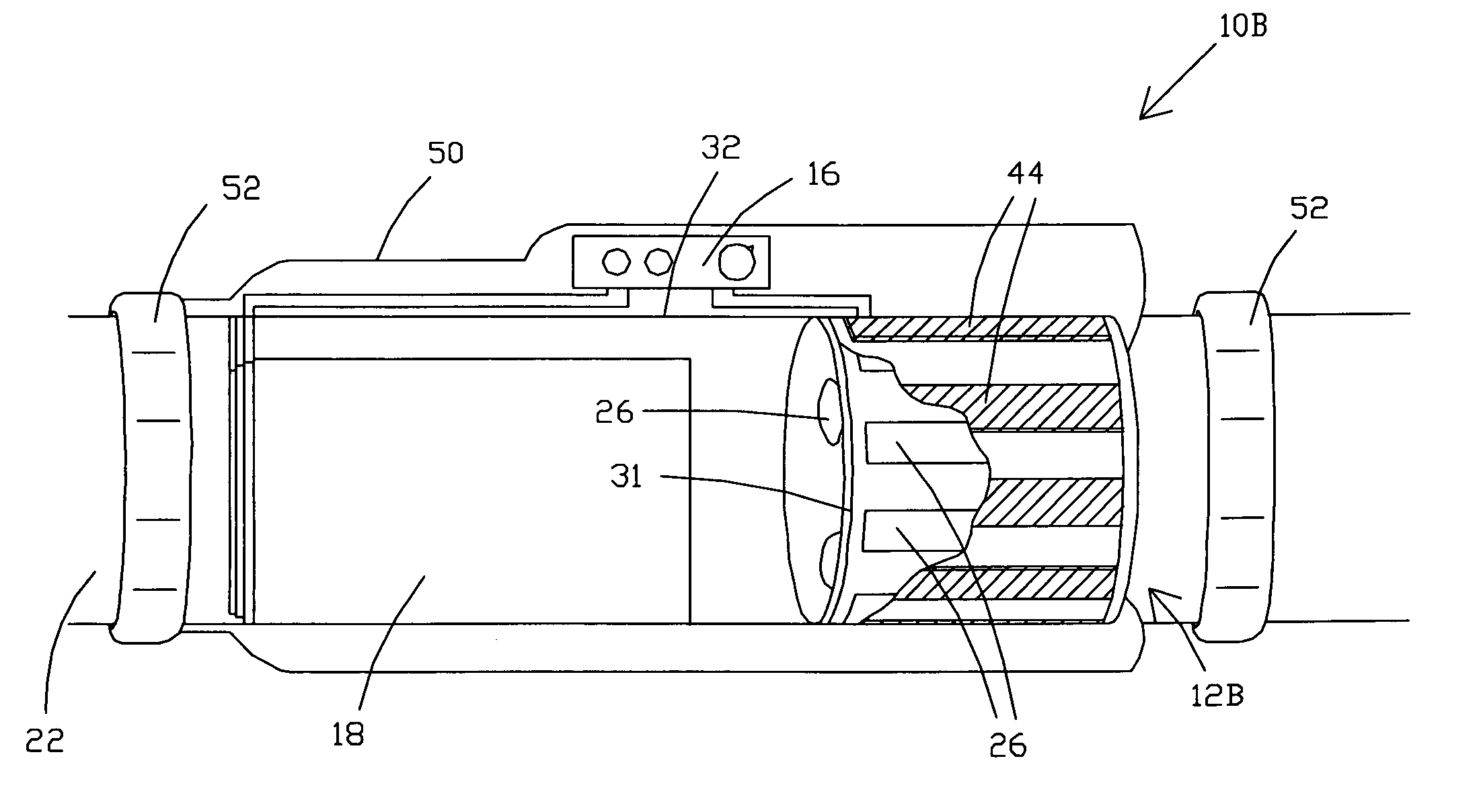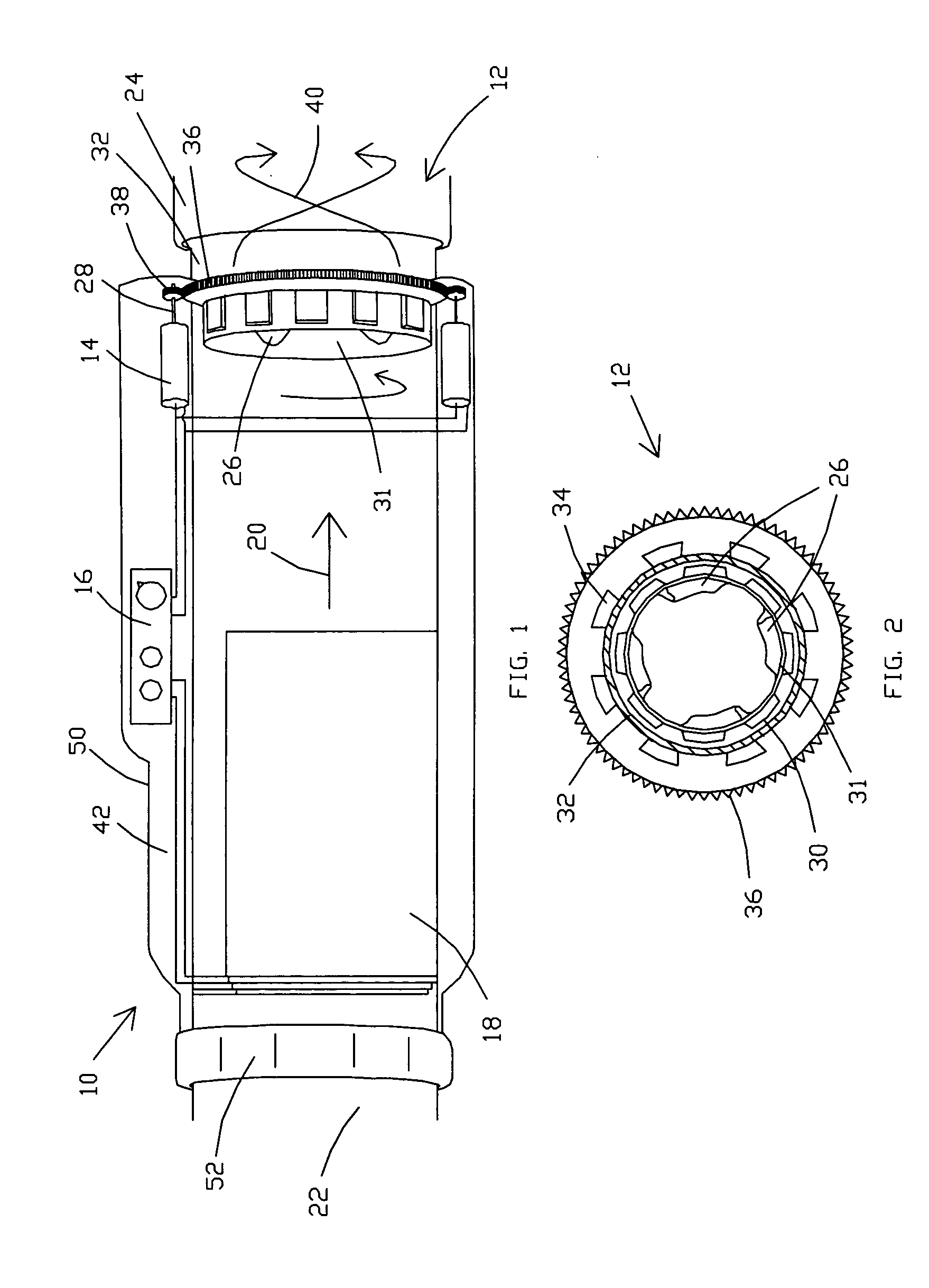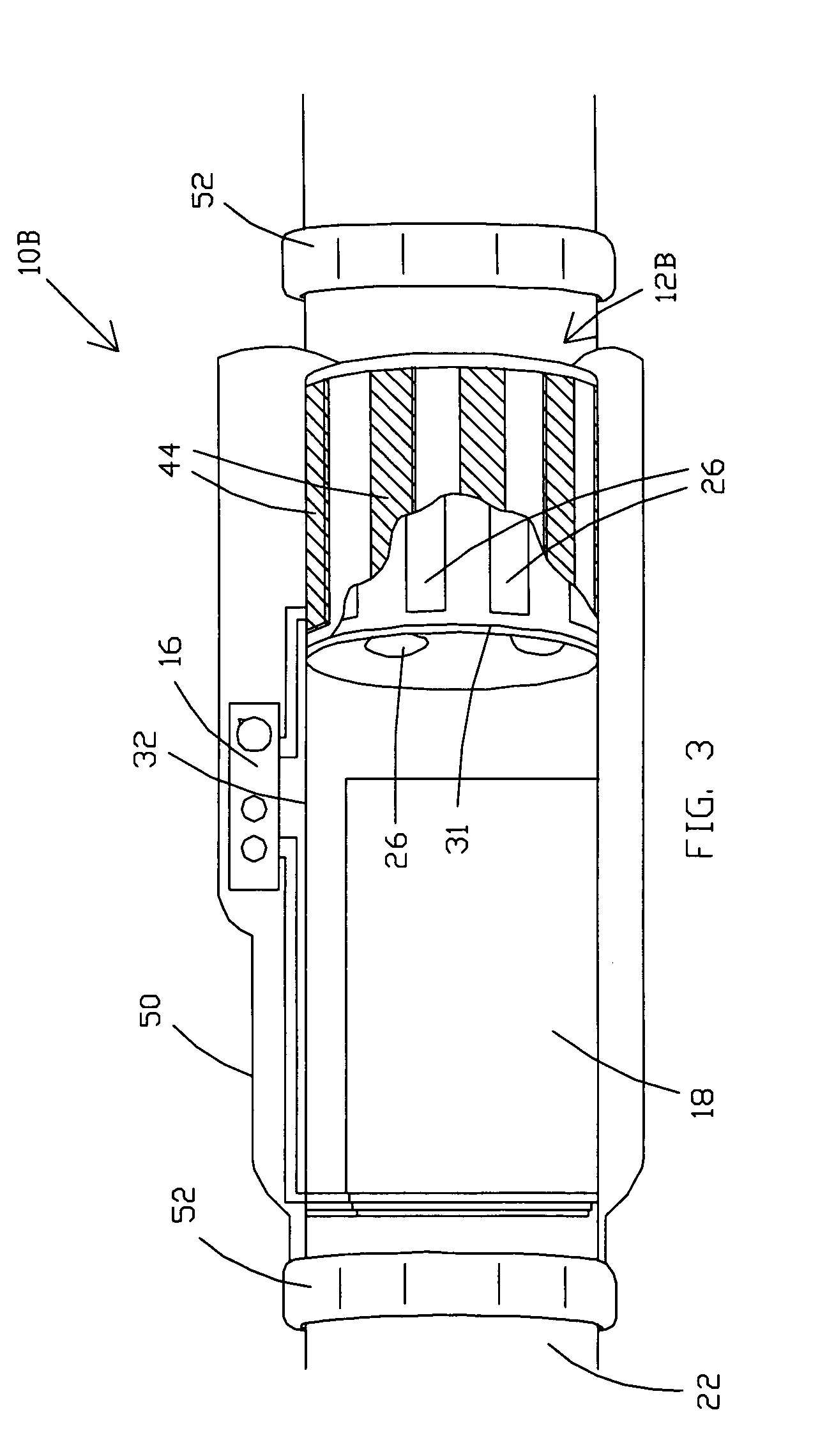Water treatment turbine apparatus and method
a technology of water treatment turbines and turbines, which is applied in the field of water purification, can solve the problems of damage to pool plaster, high chlorine cost, and inability to meet the needs of cleaning, and achieve the effects of eliminating flow detection devices, reducing external energy consumption, and constant energy consumption
- Summary
- Abstract
- Description
- Claims
- Application Information
AI Technical Summary
Benefits of technology
Problems solved by technology
Method used
Image
Examples
Embodiment Construction
[0057] In one embodiment of the present invention, means are provided to produce chlorine in a body of water by and electrolysis chemical reaction without the need to install electrical wiring. It is often desirable to avoid electrical wiring as much as possible around pools and spas.
[0058] Referring now to the drawings, in more particularly to FIG. 1, there is shown one possible embodiment of a turbine chlorine generator 10 in accord with the present. Connections 52 may be utilized for in line installation of a turbine chlorine generator as described herein.
[0059] Turbine chlorine generator 10 comprises a turbine 12. DC voltage generator 14 and voltage regulator 16 produce a DC voltage that is applied to cell plates 18. DC voltage generator 14 and voltage regulator 16 may comprise any suitable power generator such as alternators generators, regulators, or other power supplies that may be used to supply a DC voltage to cell plates 18.
[0060] Turbine 12 rotates in response to the f...
PUM
| Property | Measurement | Unit |
|---|---|---|
| residual time | aaaaa | aaaaa |
| force | aaaaa | aaaaa |
| magnetic field | aaaaa | aaaaa |
Abstract
Description
Claims
Application Information
 Login to View More
Login to View More - R&D
- Intellectual Property
- Life Sciences
- Materials
- Tech Scout
- Unparalleled Data Quality
- Higher Quality Content
- 60% Fewer Hallucinations
Browse by: Latest US Patents, China's latest patents, Technical Efficacy Thesaurus, Application Domain, Technology Topic, Popular Technical Reports.
© 2025 PatSnap. All rights reserved.Legal|Privacy policy|Modern Slavery Act Transparency Statement|Sitemap|About US| Contact US: help@patsnap.com



